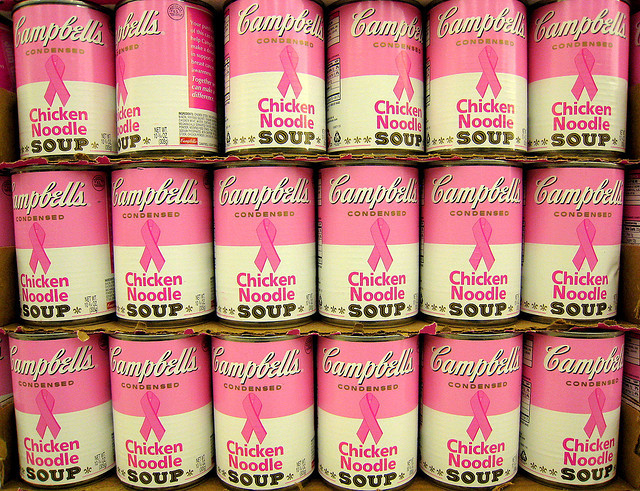Commodifying The Cause Pt 3: Pink-Washing
Out of all corporate efforts to co-opt causes, none are as prevalent as the co-optation of the fight against breast cancer—and it is likely that none have ever been as profitable. For over 25 years, the Pink Ribbon has been presented as a symbol of the fight against breast cancer, and for over 30 years, October has been designated Breast Cancer Awareness Month. Every October, the Pink Ribbon is ubiquitous, appearing on government buildings, billboards, storefront displays, and even NFL jerseys, in what could easily be viewed as an act of collective good will. So where does profitability come into play? The answer lies in the origins of Breast Cancer Awareness Month (BCAM) and the Pink Ribbon, which, unbeknownst to most, are both deeply rooted in corporate co-optation.
BCAM was founded in 1985 by the American Breast Cancer Society, but was done so in partnership and with the funding of Imperial Chemical Industries’ pharmaceutical division, now known as AstraZeneca (then just Zeneca). Intended to “fill the information void” and help women “take charge of their breast health,” the partnership led to a conveniently narrow definition of how to achieve this; research into breast cancer prevention took a backseat to detection, and ultimately the promotion of treatments, from which AstraZeneca directly profits thanks to an ever-growing demand.
The Pink Ribbon symbol itself went through a similar, albeit more blatant, co-optation. The idea for the ribbon initially came from 68-year-old activist Charlotte Haley in the early 90s. Having witnessed her own mother and sister battle cancer, Charlotte began giving out peach-colored ribbons to shed light on the lack of federal funding for research into breast cancer prevention. Notes she attached to the ribbons read: “The National Cancer Institute annual budget is $1.8 billion; only 5 percent goes for cancer prevention. Help us wake up our legislators and America by wearing this ribbon”. Hearts and minds were won as the word spread, eventually reaching Evelyn Lauder of the Estee Lauder Beauty products company. Lauder requested permission to use the peach ribbon for a campaign. Notably, Haley declined for fear of seeing her message diluted and commercialized. What happened next is a classic example of corporate co-optation: Lauder responded by simply changing the ribbon’s color to pink, and introducing it as the official symbol of breast cancer awareness in October 1992.
This effectively opened the floodgates to everything Haley feared. With each passing year, the number of companies using the pink ribbon as part of promotional campaigns grew (along with associated profits), but despite all the money raised for “awareness,” so did the number of breast cancer cases. It certainly doesn’t help that the money raised is so often hard to track and often doesn’t even end up being donated towards the cause. It helps even less that the money is sometimes even raised through the sale and promotion of carcinogenic products. A growing number of women-led activist groups such as Think Before You Pink, Pink Ribbon Blues, and Breast Cancer Action have sprung up to fight for breast cancer victims all over the world who not only feel they’ve been left behind, but also rightfully feel that their pain is being exploited for personal gain.

